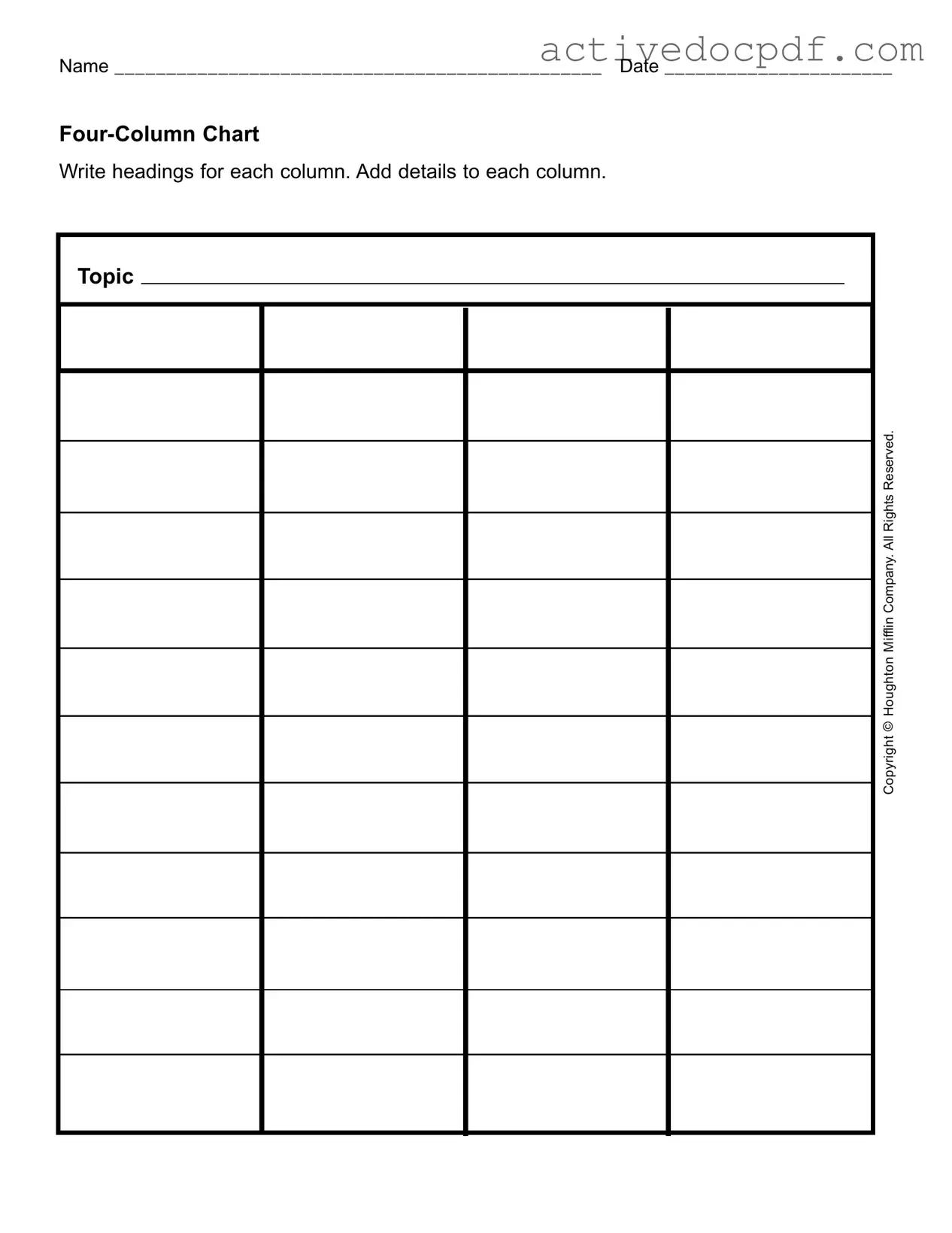Free Four Column Chart PDF Form
The Four Column Chart form is a simple organizational tool that helps individuals and teams visually categorize and analyze information. This format encourages clarity by dividing content into four distinct columns, allowing for easy comparison and understanding of various topics. Whether used for brainstorming or project planning, the Four Column Chart can enhance communication and streamline thought processes.
Edit Form Online
